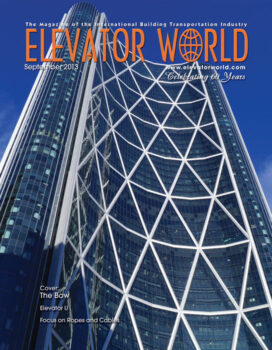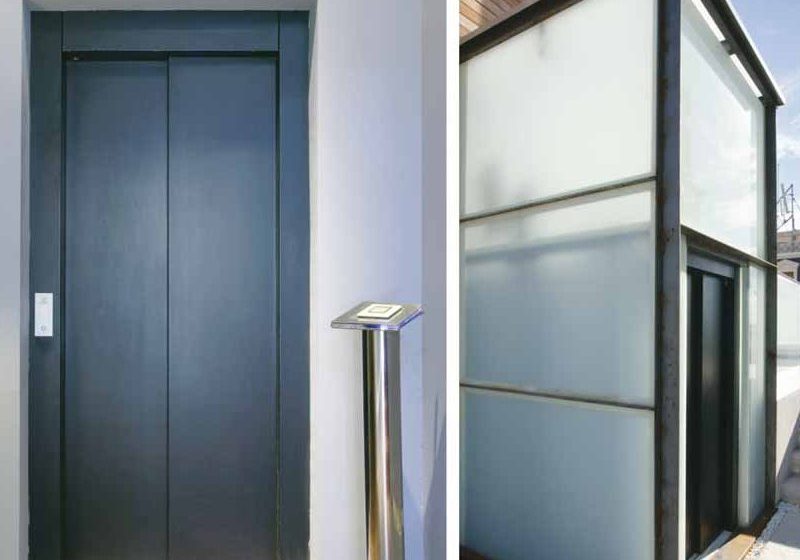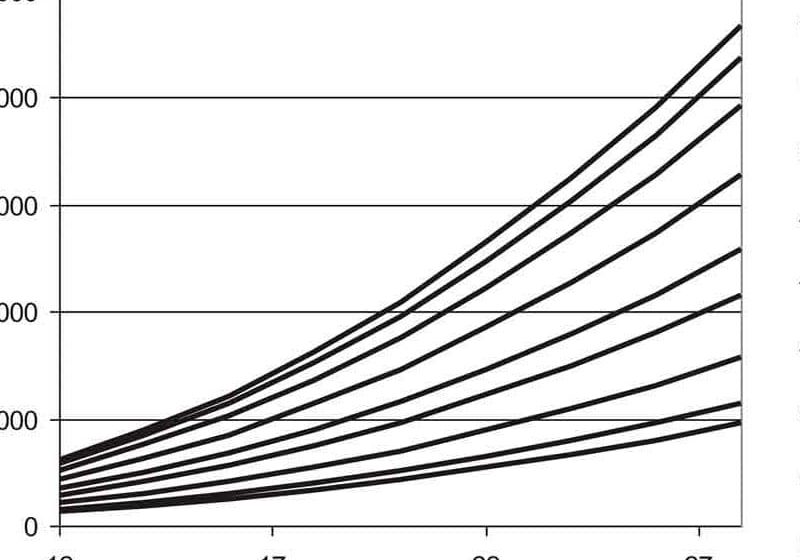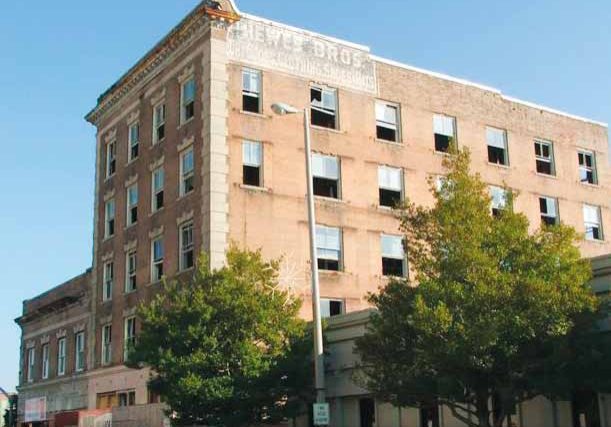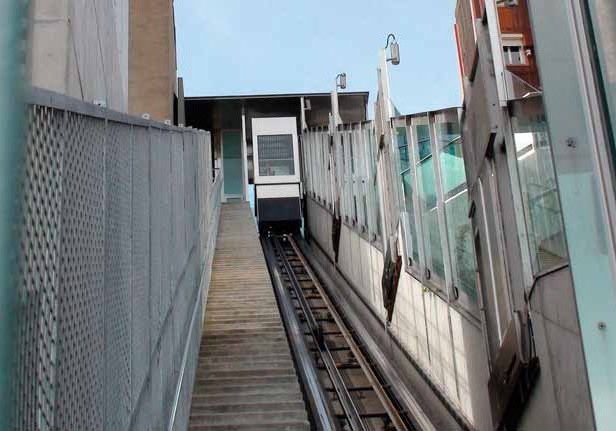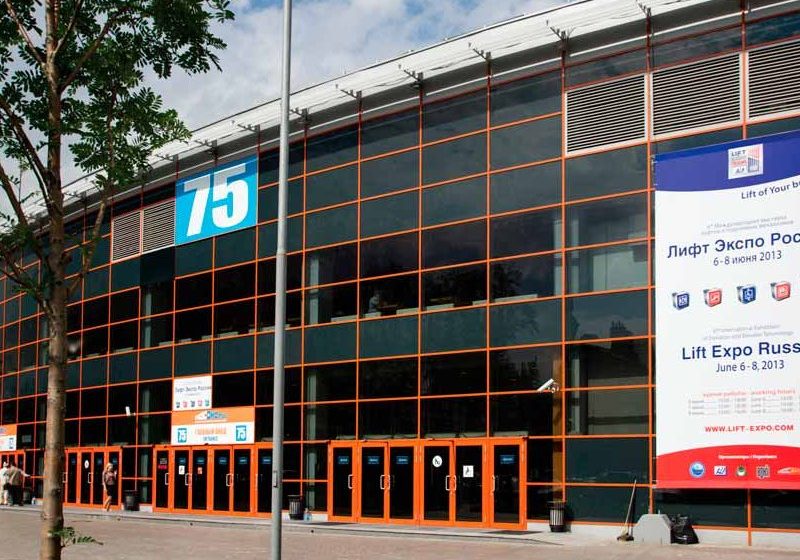CIBSE Lifts Group Visits Paternoster Lift
Sep 1, 2013

The Chartered Institution for Building Services Engineers (CIBSE) Lifts Group visited the Arts Tower at the University of Sheffield in the U.K. on June 19 to view the paternoster lift there and hear about its refurbishment. Michael Bottomley of Lerch Bates Inc. introduced the meeting with a history of paternoster lifts, first built in 1884 by the engineering firm J & E Hall Ltd. of Dartford, U.K., as the “Cyclic Elevator.” The type was re-launched twice, once in the 1920s and again in the 1960s. J & E Hall was bought by Otis in 1968. Schindler was Otis’ main competitor in the U.K.
The Sheffield University Arts Tower paternoster was built more than 50 years ago by Schindler. It is the largest paternoster ever made, with 38 two-person cars. It weighs more than 20 mT without passengers. Lerch Bates was the consultant for its refurbishment, which was tendered in September 2009. While most paternosters have been replaced by traditional lifts, their traffic analysis demonstrated a direct replacement by lifts would simply not provide adequate handling capacity. As the building is listed, it would have been unacceptable to add additional shafts. Furthermore, the Historic Buildings and Monuments Commission for England (English Heritage) expected the paternoster to be returned, as far as practical, to its original state, as it is one of the iconic interior features of the building.
The refurbishment tender called for improved safety features, addressing the issues responsible for the replacement of other paternosters on “safety grounds.” The university itself was responsible for identifying the cause of and providing a solution for cracks in the car slings. Bottomley commended the British team that contributed to this historic refurbishment: Lerch Bates Halifax, Industrial & Marine Lift Services of Heywood, Highfield Gears of Huddersfield, International Lift Equipment of Leicester, the University of Sheffield Estates Department, G-Tex Stainless Ltd. of Dudley, Memco of Essex and English Heritage of Holborn. The project was completed on schedule in September 2011.
Bryan Armitage from the University of Sheffield Estates Department gave the client’s perspective. The university is very pleased with the refurbished paternoster, which provides effective vertical transportation. At the beginning of each academic year, new students soon get used to stepping in and out of the moving cars. The two regular passenger lifts in the same lobby supplement the lift service, allowing for disabled access and the transportation of bulky items. Your author talked about the advantages of the paternoster in terms of handling capacity and discussed the “next generation” of paternosters. Dr. Richard Thornton has noted there were more than 30 patents involving the use of linear motors in the 1990s (ELEVATOR WORLD, September 2006). In 1996, Otis presented its Odyssey system, which involved cars that moved in three dimensions. Fujitec presented multicar solutions in 2002, demonstrating potential shaft savings. Your author also noted that “The Twilight Zone Tower of Terror™” at Walt Disney World appeared to work on a similar basis as the proposed Otis Odyssey system, and there was a lot for the vertical transportation industry to learn from the way the theme parks manage large volumes of people.
Get more of Elevator World. Sign up for our free e-newsletter.

